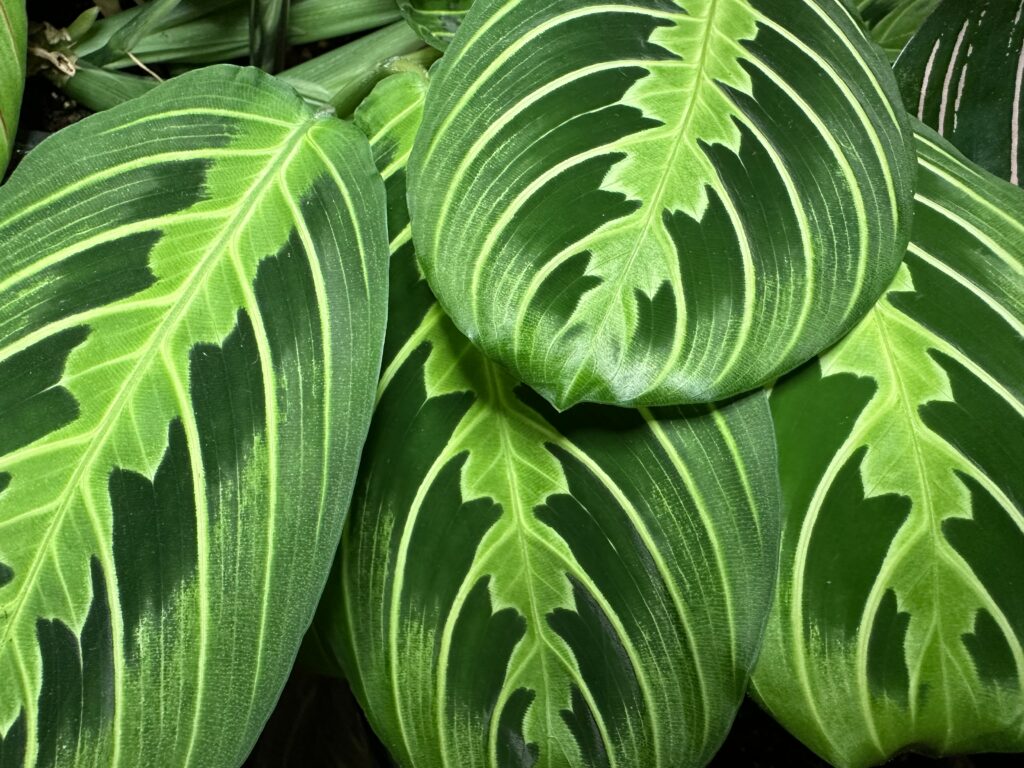Prayer plants are known for their gorgeously elaborate leaves. Many variations and widespread availability make these among the most popular houseplants on the market at affordable prices. This also makes these beautiful plants a great starting point to try prayer plant propagation – making new plants from cuttings grown in water.
What is a Prayer Plant?
Prayer Plants comprise of several different variants of the Maranta family. Maranta Red and Maranta Lemon Lime are among the most popular variants of Prayer Plants. While the Calathea family is also closely related, note that these plants, such as the Calathea Ornata (Pinstripe Plant) cannot be grown from cuttings, and can only be propagated by division.
For this guide, we’ll focus on propagation with a classic Maranta Prayer Plant.
Why Propagate a Prayer Plant
There are a few different reasons to take cuttings and grow new plants. I have a large Prayer Plant in a beautiful planter. When the mother plant’s vines get too long, I clip cuttings of the ends. After rooting the cuttings in water, I place the new plants back in with the original. This technique gives the plant a full and lush look.
You can also propagate your plant to start entirely new potted plants. Whether you’re growing your collection or gifting to friends and family, prayer plants are wonderful due to their easy-going nature.
Signs Your Prayer Plant is Ready for Cuttings
Before you propagate your Prayer Plant, it’s important to determine if your plant is large and healthy enough to take cuttings.
Does your plant appear to be in good overall health? Inspect the leaves for signs of discoloration, browning or pests. If your plant appears healthy and is producing new leaves, it should be a great candidate to propagate.
You’ll need at least one node segment of the structural stem for a cutting to root. Only take a cutting if the original plant will still have at least 3-4 leaves to ensure it will have enough energy to grow.
With your initial inspection done, it’s time to get cutting!
Taking Prayer Plant Cuttings
Cutting a Node
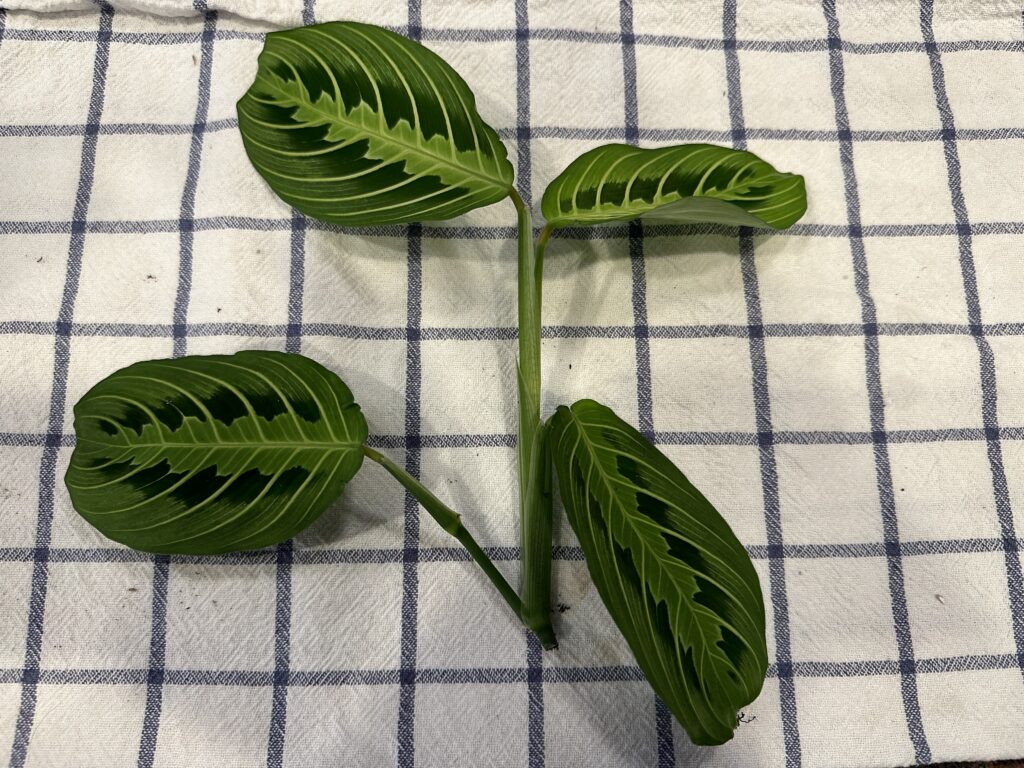
Nodes are the segments of the main stem that span from each leaf. At the bottom of the node, you may notice an aerial root nub. Cut directly below this root to give your cutting a jumpstart to develop roots. Your node cutting should also include at least one leaf, but you can include more.
🌱 Need help finding a node? Take a look at our plant anatomy post 👀 >>
Rooting in Water
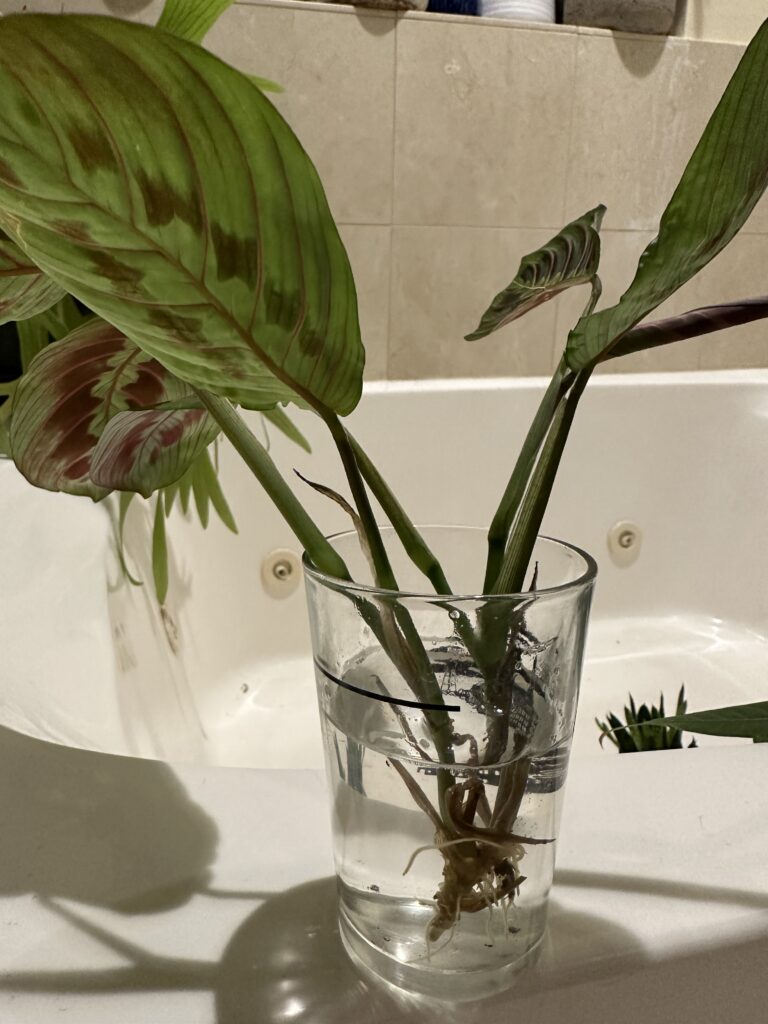
Place the cutting in a small glass, jar or vase. Add water so it covers the bottom part of the node, but not so that the full plant is submerged. You can also use a rooting hormone on the bottom tip of the node to make roots grow faster, but this is completely optional.
Looking for Root Growth
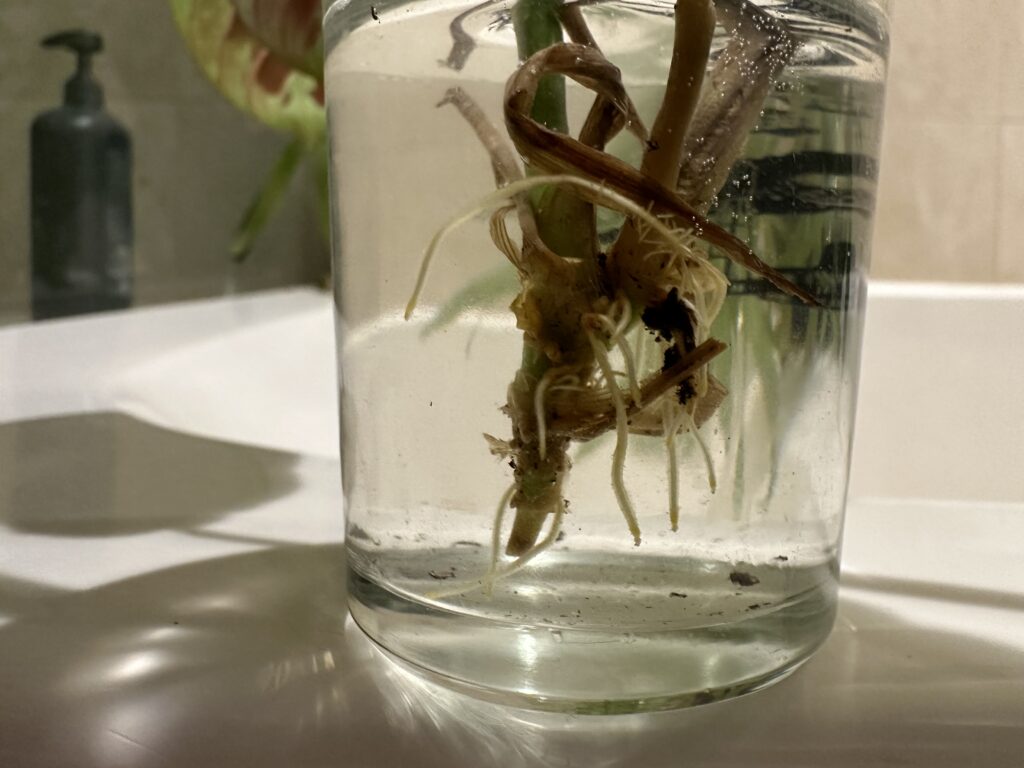
Change the water at least once a week, or as evaporation requires. After a few weeks, you should notice small white roots growing from the node base. Once the roots are about 2” in length and start producing secondary roots, your cutting is ready to return to soil.
Moving to Soil
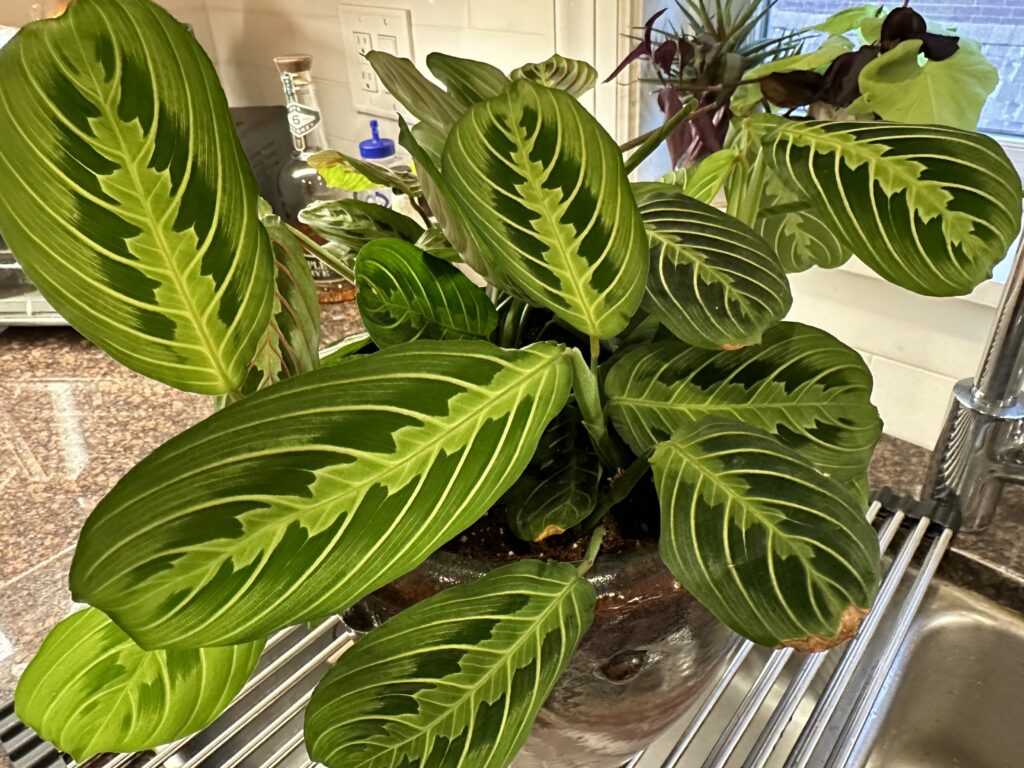
Prepare a new pot with soil, or find a spot with the original plant. Well-draining tropical soil mixes work great for Prayer Plants. Create a small hole in the soil and gently place the cutting’s roots inside, carefully packing the soil around it so it can establish itself.
Keep the soil moist throughout the first few weeks by watering it frequently but with less water volume. This will encourage root growth and will help your new plant start its new life.
Closing Thoughts
Prayer Plant propagation may take a few weeks, but the ability to grow your own plants makes it well worth the process. Whether you’re growing to expand your collection or make gifts for friends, Prayer Plant propagation is a great skill that’s easy to master. Not only can it help you create more beautiful plants, but it’s also great practice to propagate more advanced houseplants in the future.

